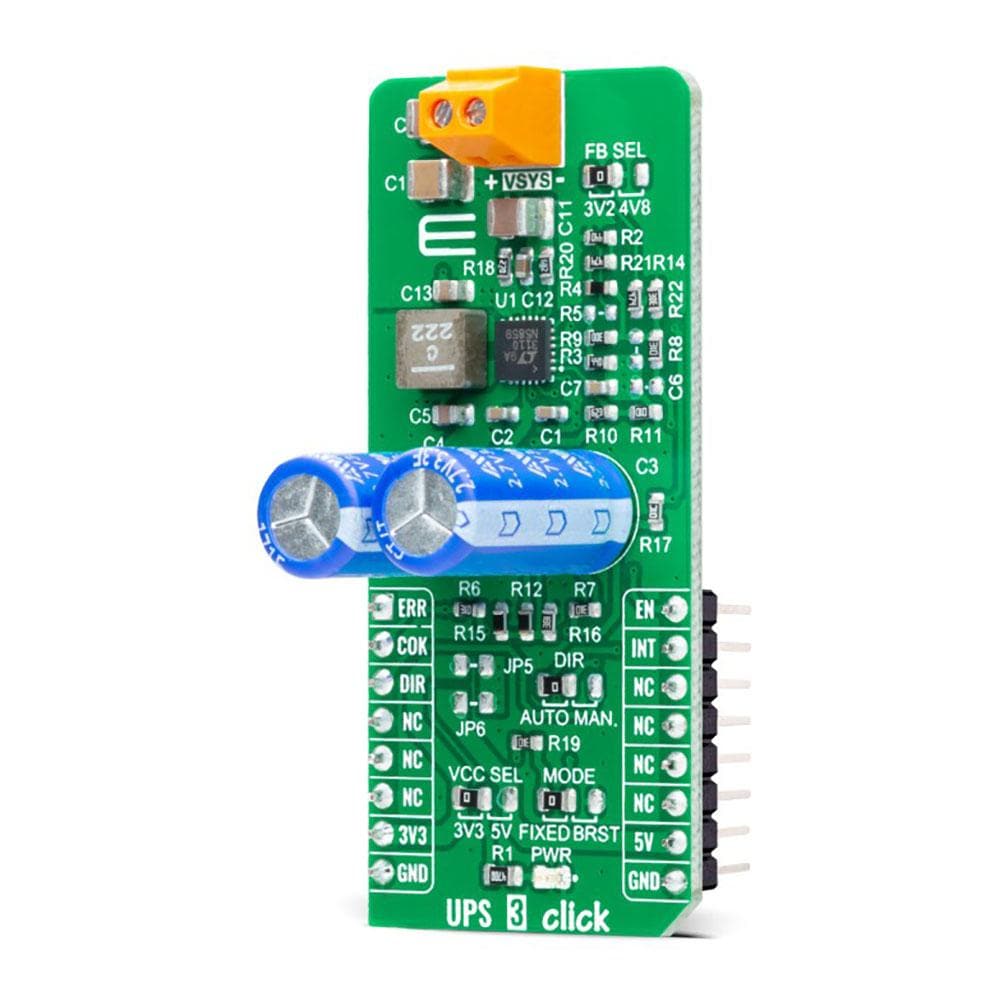
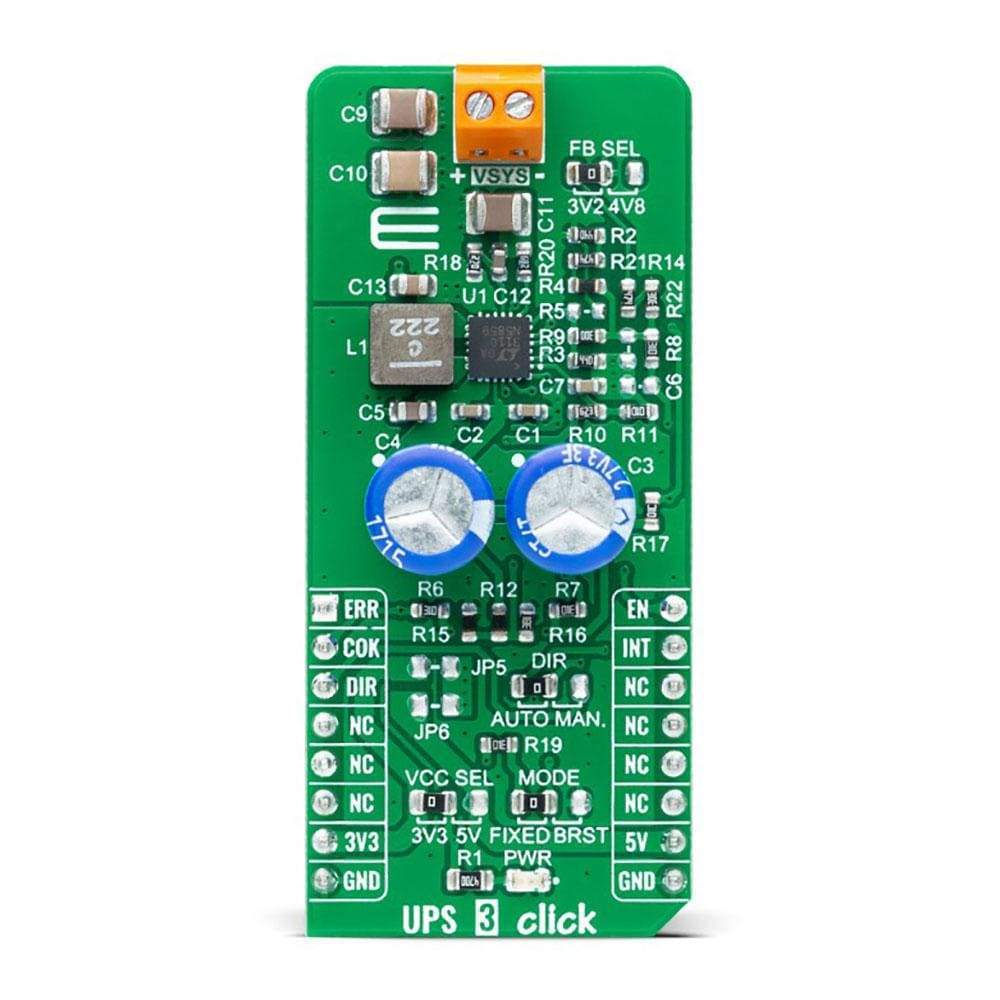
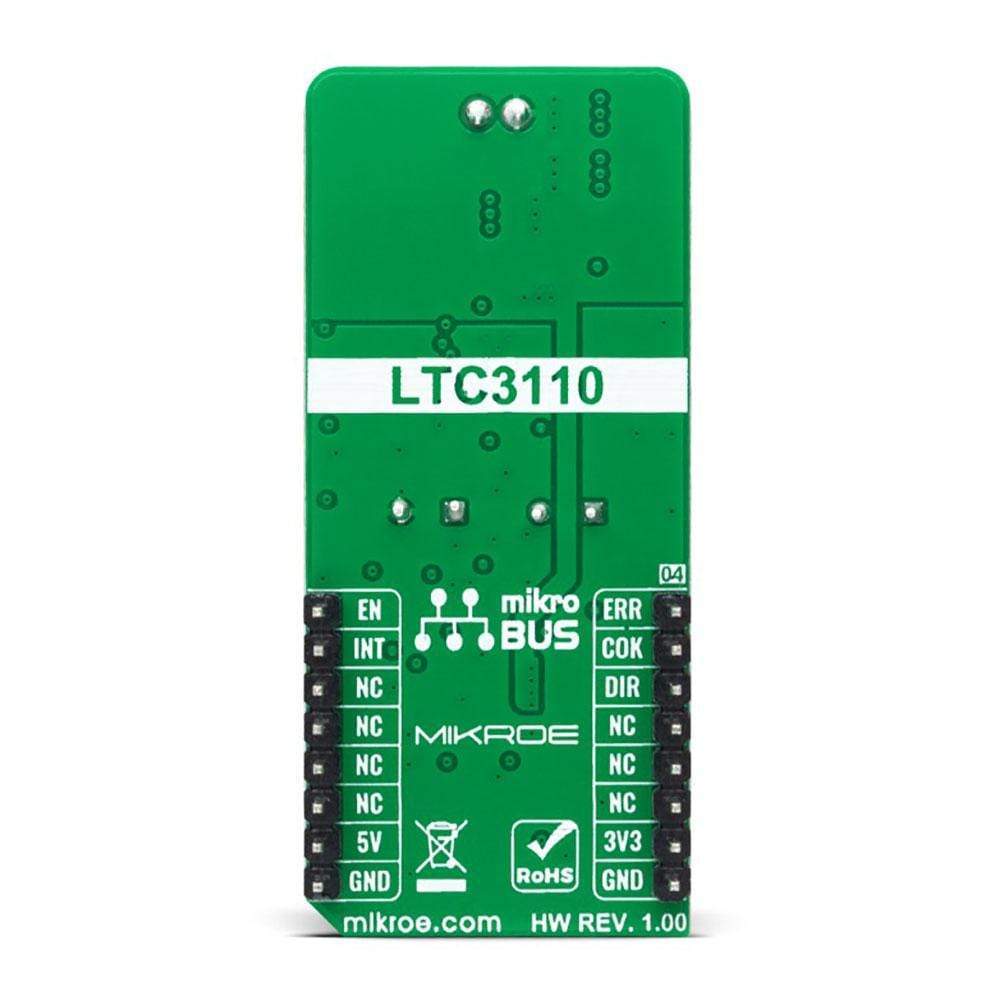
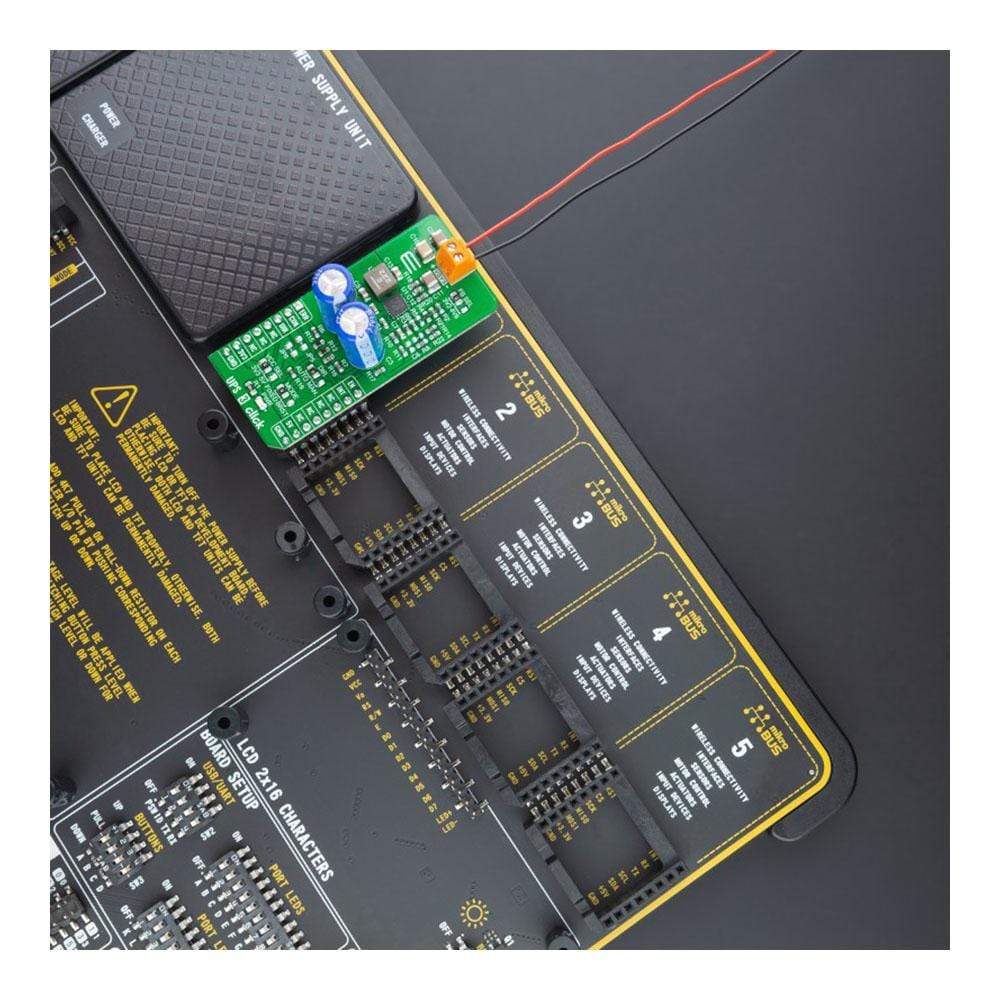
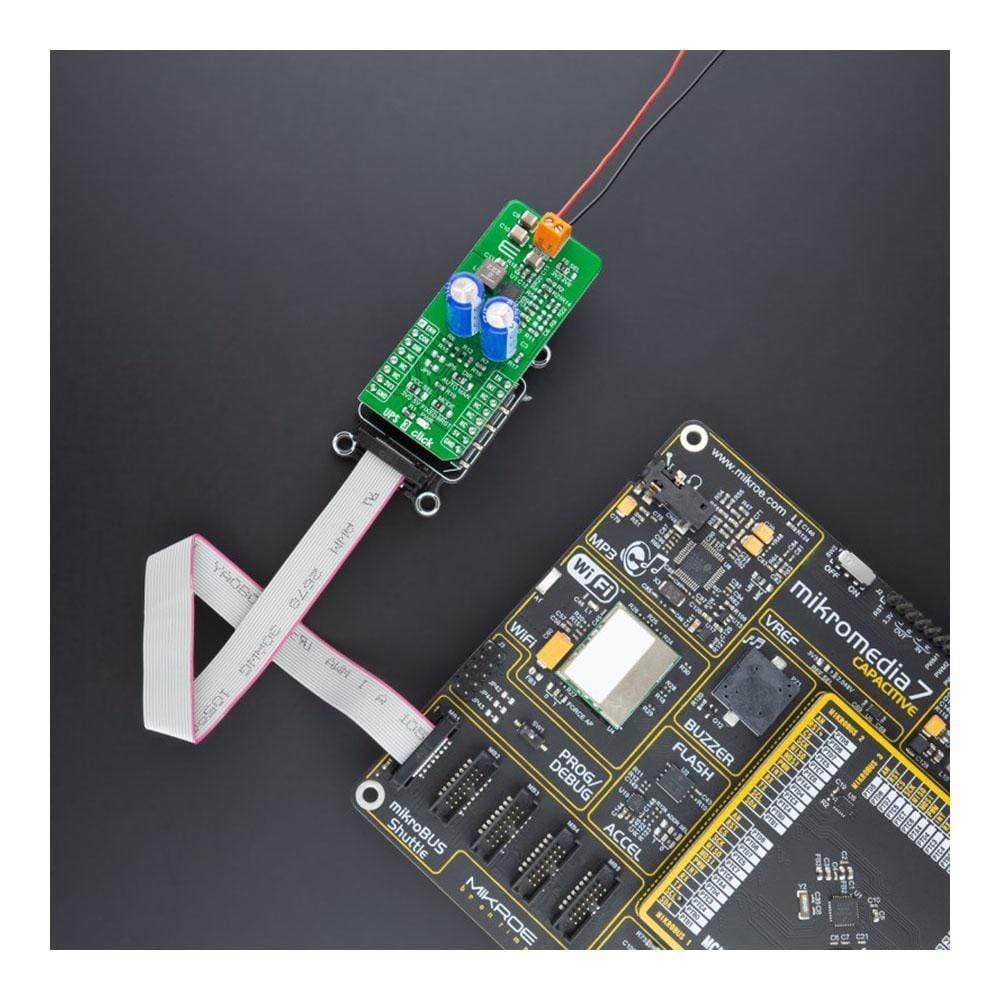
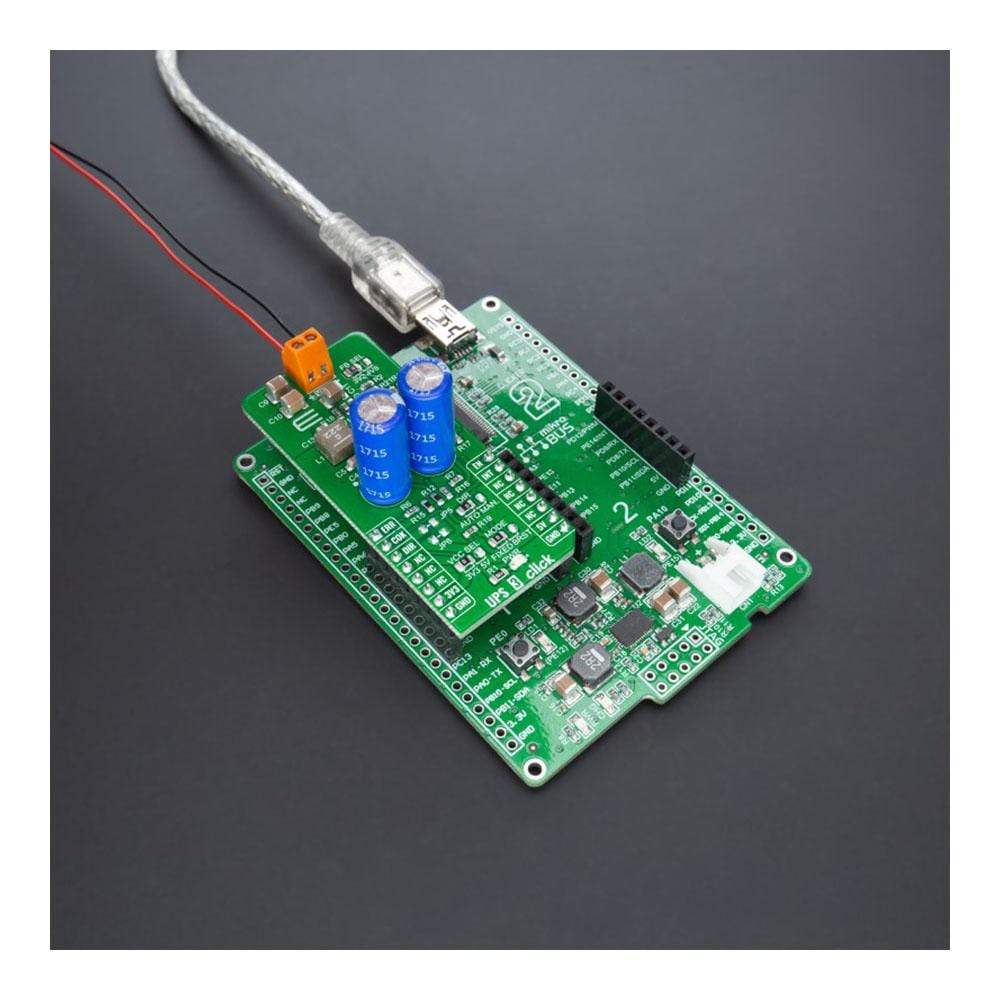
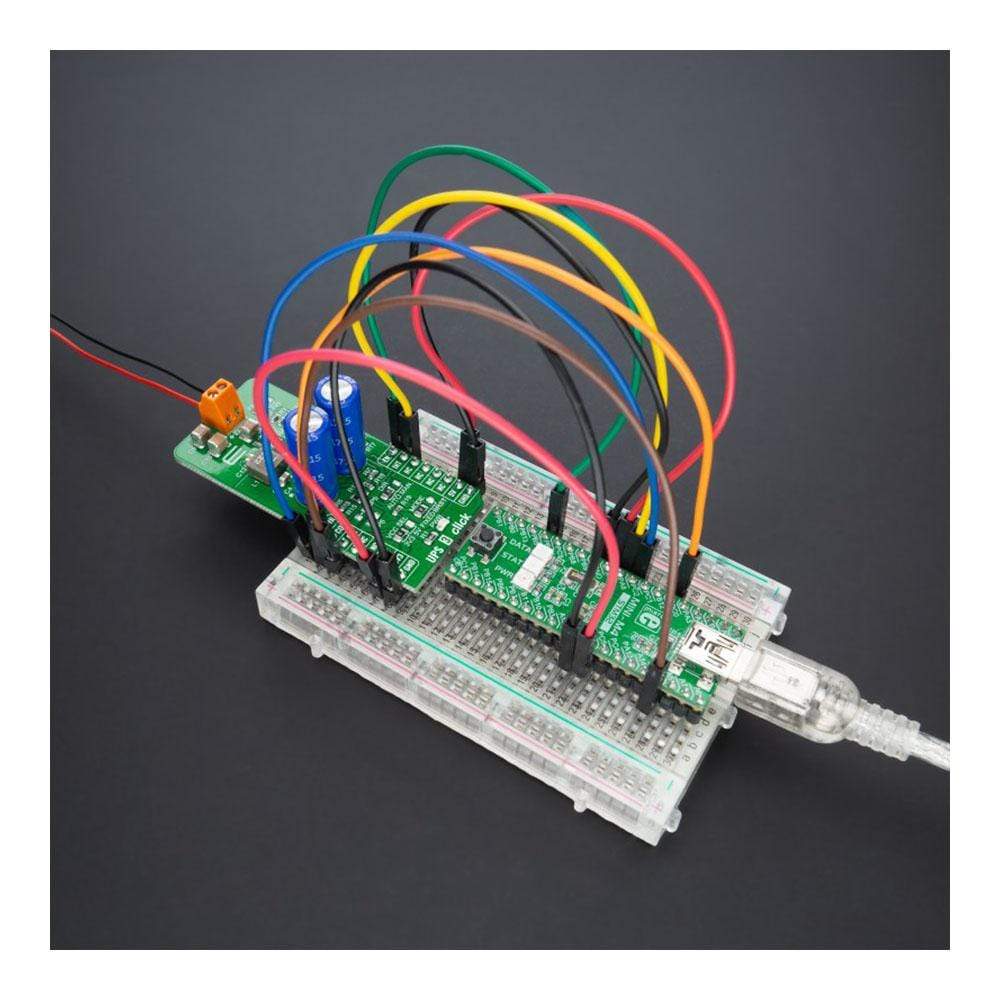
Overview
The UPS 3 Click Board™ is a compact add-on board that represents a bidirectional active charge/balancing solution. This board features the LTC3110, a bidirectional buck-boost DC/DC regulator/charger combination with selectable operation modes for charging and system backup from Analog Devices. It can autonomously transition from Charge to Backup mode or switch modes based on an external command. A proprietary low noise switching algorithm optimizes efficiency with capacitor/battery voltages above, below, or equal to the system output voltage. Additional features include voltage supervisors for direction control and end of a charge and a general-purpose comparator with open-collector output for interfacing with MCU. This Click Board™ is suitable for a backup power source for a wide range of battery-operated embedded applications.
The UPS 3 Click Board™ is supported by a mikroSDK compliant library, which includes functions that simplify software development. This Click Board™ comes as a fully tested product, ready to be used on a system equipped with the mikroBUS™ socket.
Downloads
Der UPS 3 Click Board™ ist eine kompakte Zusatzplatine, die eine bidirektionale aktive Lade-/Ausgleichslösung darstellt. Diese Platine verfügt über den LTC3110, eine bidirektionale Buck-Boost-DC/DC-Regler/Ladegerät-Kombination mit wählbaren Betriebsmodi zum Laden und zur Systemsicherung von Analog Devices. Es kann autonom vom Lade- in den Sicherungsmodus wechseln oder die Modi basierend auf einem externen Befehl umschalten. Ein proprietärer rauscharmer Schaltalgorithmus optimiert die Effizienz mit Kondensator-/Batteriespannungen über, unter oder gleich der Systemausgangsspannung. Zu den zusätzlichen Funktionen gehören Spannungswächter für die Richtungssteuerung und das Ende einer Ladung sowie ein Allzweckkomparator mit Open-Collector-Ausgang für die Schnittstelle mit MCU. Dieses Click Board™ eignet sich als Backup-Stromquelle für eine Vielzahl von batteriebetriebenen eingebetteten Anwendungen.
Das UPS 3 Click Board™ wird durch eine mikroSDK-kompatible Bibliothek unterstützt, die Funktionen enthält, die die Softwareentwicklung vereinfachen. Dieses Click Board™ wird als vollständig getestetes Produkt geliefert und ist bereit für den Einsatz auf einem System, das mit der mikroBUS™-Buchse ausgestattet ist.
| General Information | |
|---|---|
Part Number (SKU) |
MIKROE-4479
|
Manufacturer |
|
| Physical and Mechanical | |
Weight |
0.023 kg
|
| Other | |
Country of Origin |
|
HS Code Customs Tariff code
|
|
EAN |
8606027381973
|
Warranty |
|
Frequently Asked Questions
Have a Question?
Be the first to ask a question about this.







